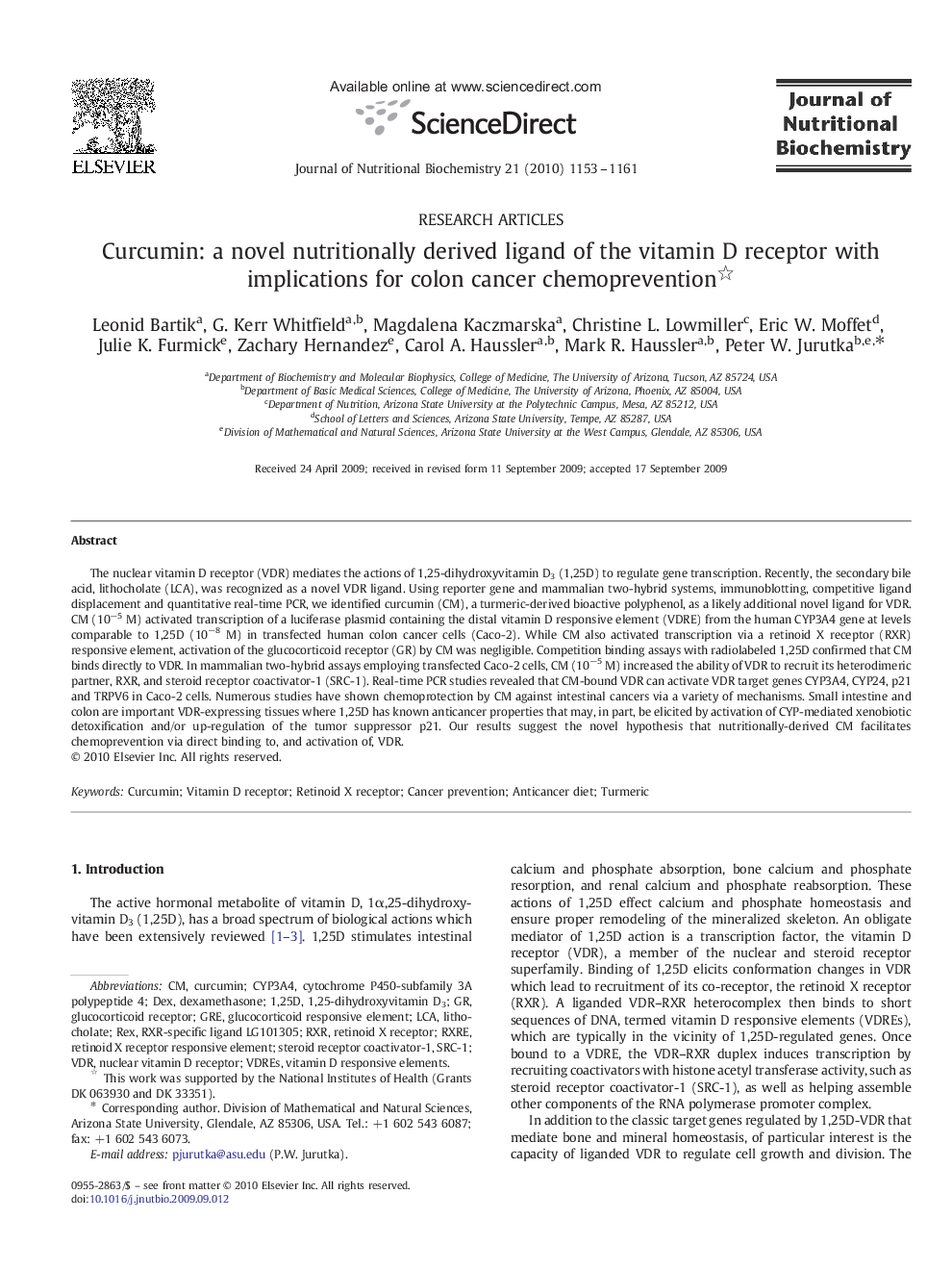| کد مقاله | کد نشریه | سال انتشار | مقاله انگلیسی | نسخه تمام متن |
|---|---|---|---|---|
| 1990763 | 1540702 | 2010 | 9 صفحه PDF | دانلود رایگان |

The nuclear vitamin D receptor (VDR) mediates the actions of 1,25-dihydroxyvitamin D3 (1,25D) to regulate gene transcription. Recently, the secondary bile acid, lithocholate (LCA), was recognized as a novel VDR ligand. Using reporter gene and mammalian two-hybrid systems, immunoblotting, competitive ligand displacement and quantitative real-time PCR, we identified curcumin (CM), a turmeric-derived bioactive polyphenol, as a likely additional novel ligand for VDR. CM (10−5 M) activated transcription of a luciferase plasmid containing the distal vitamin D responsive element (VDRE) from the human CYP3A4 gene at levels comparable to 1,25D (10−8 M) in transfected human colon cancer cells (Caco-2). While CM also activated transcription via a retinoid X receptor (RXR) responsive element, activation of the glucocorticoid receptor (GR) by CM was negligible. Competition binding assays with radiolabeled 1,25D confirmed that CM binds directly to VDR. In mammalian two-hybrid assays employing transfected Caco-2 cells, CM (10−5 M) increased the ability of VDR to recruit its heterodimeric partner, RXR, and steroid receptor coactivator-1 (SRC-1). Real-time PCR studies revealed that CM-bound VDR can activate VDR target genes CYP3A4, CYP24, p21 and TRPV6 in Caco-2 cells. Numerous studies have shown chemoprotection by CM against intestinal cancers via a variety of mechanisms. Small intestine and colon are important VDR-expressing tissues where 1,25D has known anticancer properties that may, in part, be elicited by activation of CYP-mediated xenobiotic detoxification and/or up-regulation of the tumor suppressor p21. Our results suggest the novel hypothesis that nutritionally-derived CM facilitates chemoprevention via direct binding to, and activation of, VDR.
Journal: The Journal of Nutritional Biochemistry - Volume 21, Issue 12, December 2010, Pages 1153–1161